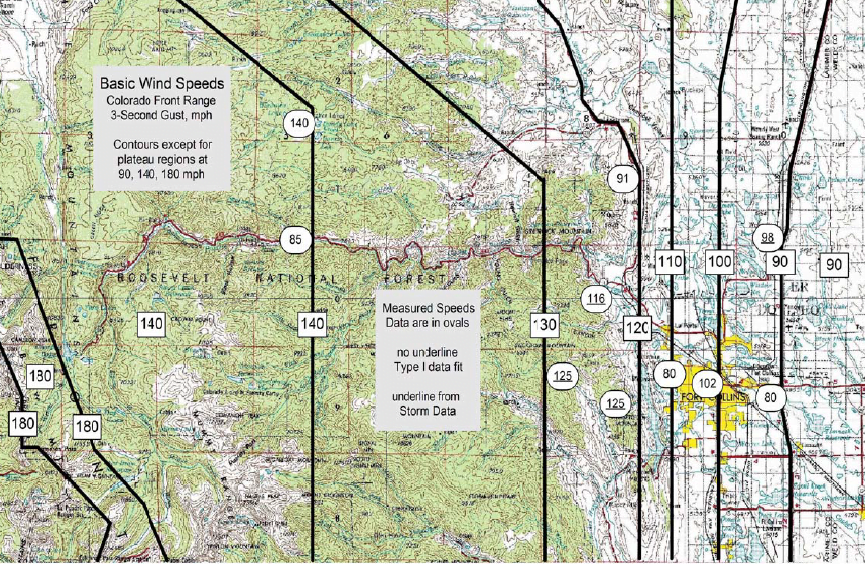News
Special wind regions
Minimum Design Loads for Buildings and Other Structures (ASCE 7-10) includes wind speed maps of the United States for determining design wind speeds in all parts of the country. Normally, choosing a wind speed is simply a matter of locating your site on the map and reading the number indicated.
However, upon closer inspection of the map, one finds a handful of little gray blobs that have no numbers whatsoever, little islands of ambiguity in a sea of numerical certainty. Submitted for your approval, Mr. or Ms. Structural Engineer, are the so-called Special Wind Regions.

It is perhaps no accident that special wind regions are represented as gray areas, for that is precisely what they are. These are regions where exceptions are the rule, where no generalization can be made except that, in general, the wind acts peculiarly. The standard has this to say about special wind regions:
There are special regions in which wind-speed anomalies are known to exist…Winds blowing over mountain ranges or through gorges or river valleys in these special regions can develop speeds that are substantially higher than the values indicated on the map. When selecting basic wind speeds in these special regions, use of regional climatic data and consultation with a wind engineer or meteorologist is advised.
It is also possible that anomalies in wind speeds exist on a micrometeorological scale…Wind speeds over complex terrain may be better determined by wind-tunnel studies.
Section C6.5.4.1
So, special wind regions are there because of topography. Indeed, one could be forgiven for quickly glancing at the wind map and assuming that the gray areas are mountain ranges.
Are these special wind regions, then, just monumental cop-outs? Are they problems that the engineers never got to because they ran out of coffee?
No and no. Working within a special wind regions simply means that you have to be much more specific about where your building or structure is located. Let’s face it, geographically, it doesn’t much matter where in Kansas you place a building (we love all of our Kansas friends, but the Sunflower State is, one has to admit, flatter than a standard-issue pancake), but it matters a great deal whether one builds on the east or west side of the Continental Divide. In fact, the winds along Colorado’s Front Range are so wild that Dr. Jon Peterka, one of CPP’s original founders, developed a special wind map just for Coloradans (see the image).
So what are you to do if you find yourself faced with a special wind region? Well, as ASCE 7-10 suggests, consulting with a climate expert is probably your best bet. A meteorologist or wind engineer will know how to interpret the local climate data recorded at weather stations near your site to help you determine your design wind speed. And if nearby topography plays a role in the wind’s directionality, turbulence level, or other behavior, a well-designed wind tunnel study can take the guesswork out of interpreting these special wind regions.
